Filter by
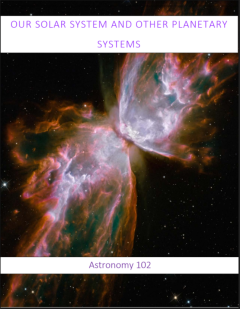
Our Solar System and Other Planetary Systems
Textbook for ASTRON 102 THE SOLAR SYSTEM at College of the Canyons Surveys the solar system, including the earth and its motions and seasons; the moon, eclipses, and tides; the content and dynamics of the solar system; planets and their satellites, asteroids, comets, and meteorites; and the evolution of the solar system.
- Edition
- -
- ISBN/ISSN
- -
- Collation
- -
- Series Title
- -
- Call Number
- 520 BEL o
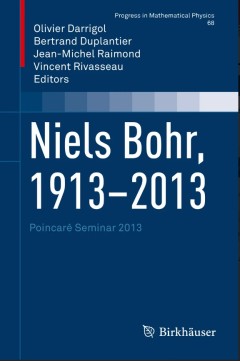
Niels Bohr, 1913-2013
This fourteenth volume in the Poincaré Seminar Series is devoted to Niels Bohr, his foundational contributions to understanding atomic structure and quantum theory and their continuing importance today. This book contains the following chapters: - Tomas Bohr, Keeping Things Open; - Olivier Darrigol, Bohr's Trilogy of 1913; -John Heilbron, The Mind that Created the Bohr Atom; - Serge Haroche & …
- Edition
- 1
- ISBN/ISSN
- 978-3-319-14315-6
- Collation
- XIII, 221
- Series Title
- Progress in Mathematical Physics
- Call Number
- -

The Right Ventricle in Health and Disease
- Edition
- -
- ISBN/ISSN
- -
- Collation
- -
- Series Title
- -
- Call Number
- -
- Edition
- -
- ISBN/ISSN
- -
- Collation
- -
- Series Title
- -
- Call Number
- -
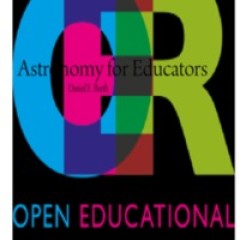
Astronomy for Educators
Astronomy for Educators provides new and accomplished K-12 instructors with concepts and projects for low-cost, high-impact STEM classroom instruction that is built around the National Academies National Research Council's K-12 Framework for Science Education.
- Edition
- -
- ISBN/ISSN
- -
- Collation
- -
- Series Title
- -
- Call Number
- 520 BAR a
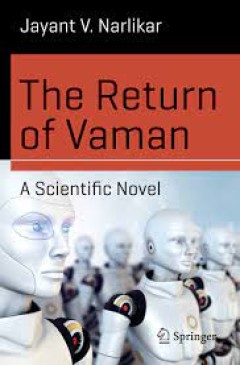
The Return of Vaman - A Scientific Novel
This collection of science fiction writings by Jayant V. Narlikar offers readers a unique glimpse into the world-famous Indian astrophysicist’s vivid and highly imaginative concepts and stories. The fictional material comprises a witty short story ("The rare idol of Ganesha") that cleverly explores the possible consequences of a mirror-symmetric individual in the context of cricket test ma…
- Edition
- -
- ISBN/ISSN
- 978-3-319-16429-8
- Collation
- -
- Series Title
- -
- Call Number
- -

Galactic Encounters Our Majestic and Evolving Star-System, From the Big Bang…
Written by William Sheehan, a noted historian of astronomy, and Christopher J. Conselice, a professional astronomer specializing in galaxies in the early universe, this book tells the story of how astronomers have pieced together what is known about the vast and complicated systems of stars and dust known as galaxies. The first galaxies appeared as violently disturbed exotic objects when the…
- Edition
- -
- ISBN/ISSN
- 978-0-387-85347-5
- Collation
- -
- Series Title
- -
- Call Number
- -
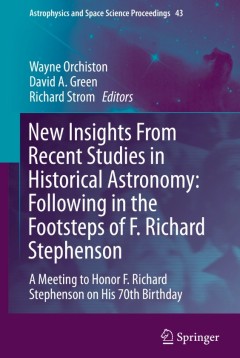
New Insights From Recent Studies in Historical Astronomy: Following in the Fo…
This book contains papers from a conference held to celebrate the 70th birthday of one of the world’s foremost astronomical historians, Professor F. Richard Stephenson, the latest recipient of the American Astronomical Society’s highest award for research in astronomical history, the LeRoy Doggett Prize. Reflecting Professor Stephenson’s extensive research portfolio, this book brings toge…
- Edition
- 1
- ISBN/ISSN
- 978-3-319-07613-3
- Collation
- XXX, 350
- Series Title
- Astrophysics and Space Science Proceedings
- Call Number
- -

Astrophysics Is Easy! An Introduction for the Amateur Astronomer
Astrophysics is often –with some justification – regarded as incomprehensible without the use of higher mathematics. Consequently, many amateur astronomers miss out on some of the most fascinating aspects of the subject. Astrophysics Is Easy! cuts through the difficult mathematics and explains the basics of astrophysics in accessible terms. Using nothing more than plain arithmetic and simpl…
- Edition
- -
- ISBN/ISSN
- 978-3-319-11644-0
- Collation
- -
- Series Title
- -
- Call Number
- -

Astrophotography on the Go Using Short Exposures with Light Mounts
No longer are heavy, sturdy, expensive mounts and tripods required to photograph deep space. With today's advances in technology, all that is required is an entry-DSLR and an entry level GoTo telescope. Here is all of the information needed to start photographing the night sky without buying expensive tracking mounts. By using multiple short exposures and combining them with mostly ‘freeware�…
- Edition
- -
- ISBN/ISSN
- 978-3-319-09831-9
- Collation
- -
- Series Title
- -
- Call Number
- -

Worlds Beyond Our Own The Search for Habitable Planets
This is a book on planets: Solar system planets and dwarf planets. And planets outside our solar system – exoplanets. How did they form? What types of planets are there and what do they have in common? How do they differ? What do we know about their atmospheres – if they have one? What are the conditions for life and on which planets may they be met? And what’s the origin of life on Earth…
- Edition
- -
- ISBN/ISSN
- 978-3-319-09894-4
- Collation
- -
- Series Title
- -
- Call Number
- -
 Computer Science, Information & General Works
Computer Science, Information & General Works  Philosophy & Psychology
Philosophy & Psychology  Religion
Religion  Social Sciences
Social Sciences  Language
Language  Pure Science
Pure Science  Applied Sciences
Applied Sciences  Art & Recreation
Art & Recreation  Literature
Literature  History & Geography
History & Geography